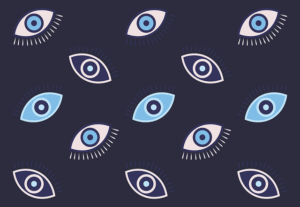The evolution of graphic design has shifted dramatically from traditional physical mediums to the digital age, thanks to advancements in computer technology. Digital art software has enabled designers to explore new realms, offering precision, efficiency, and versatility for complex compositions and intricate vector graphics. This transformation has made the process more accessible and faster, unlocking endless possibilities for artistic expression and innovation. Today, graphic design plays a pivotal role in crafting engaging digital experiences, leveraging tools like Adobe Creative Suite and Sketch for responsive design that adapts across devices. As technology advances, AI and Interactive Digital Art are shaping the future, integrating immersive experiences and revolutionizing visual communication. However, ethical considerations such as intellectual property rights and authenticity remain crucial to maintain integrity and honesty in graphic design.
Digital Art and Design have transformed creative landscapes, revolutionizing how we communicate visually. This evolution, from traditional to digital age, has not only changed aesthetics but also the tools artists and designers employ. In this article, we explore the Evolution of Graphic Design, unravel Tools and Software empowering creators, and delve into their Creative Process. We analyze Visual Communication strategies in the digital realm, dissecting The Impact on Modern Aesthetics. Additionally, we discuss Web and Mobile Design shaping user experiences, while addressing Ethical Considerations such as copyright, piracy, and authenticity. Finally, we peek into Future Trends in digital art.
Evolution of Graphic Design: From Traditional to Digital Age

The evolution of graphic design has undergone a remarkable transformation from its traditional roots to the digital age we inhabit today. Historically, graphic design relied heavily on physical mediums such as paint, pen and paper, and photoediting tools like darkrooms for creation and manipulation. Artists and designers meticulously crafted each element, from hand-drawn illustrations to carefully composed layouts using film and photomechanic techniques.
With the advent of computers and digital technology, graphic design experienced a game-changer. The introduction of digital art software and design programs enabled designers to explore new creative realms. Digital tools offered unprecedented precision, efficiency, and versatility, allowing for complex compositions, intricate vector graphics, and easy editing. This shift marked a significant turning point, where the process became more accessible, faster, and opened up endless possibilities for artistic expression and innovation in the field of graphic design.
Tools and Software: Digital Artists' Canvas

Digital artists have at their disposal a plethora of tools and software, transforming various digital platforms into their creative canvas. From graphic design programs like Adobe Photoshop and Illustrator to 3D modeling applications such as Blender and Autodesk Maya, artists can bring their visions to life in ways previously unimaginable. These powerful tools offer an extensive array of features, from photo editing and vector graphics creation to complex animation and rendering capabilities, catering to a wide range of artistic needs.
The software landscape has evolved significantly, providing digital artists with versatile options for different creative processes. Whether it’s traditional 2D art, cutting-edge 3D visualization, or multimedia installations, there’s a program tailored to enhance their workflow. Artists can experiment with code, explore virtual reality, or engage in interactive design, constantly pushing the boundaries of what digital art can achieve and captivating audiences worldwide.
Creative Process: Unlocking Digital Design Potential

The creative process in digital art and design is a dynamic journey where artists and designers unlock an unparalleled array of possibilities. With powerful software tools at their fingertips, they can transform ideas into visually stunning creations. This process begins with conceptualization—a phase where initial thoughts and inspirations take shape. Designers sketch out concepts, play with color palettes, and experiment with different styles to find the right direction for their project.
Once the concept is solidified, digital design tools become the canvas for bringing visions to life. Graphic Design software allows artists to create intricate layouts, manipulate images, and craft vector graphics with precision. They can compose complex compositions, add subtle effects, or make bold statements, all while maintaining control over every element. This stage involves a delicate balance of technical skill and artistic vision, where the designer’s unique perspective shines through, resulting in captivating digital artworks and designs.
Visual Communication: Conveying Messages in the Digital Realm

In the realm of digital art and design, visual communication has evolved exponentially, offering new avenues for conveying messages and captivating audiences. Graphic design, as a cornerstone of this transformation, leverages cutting-edge technology to create visually appealing content that transcends traditional mediums. Digital designers utilize various software tools and platforms to craft images, layouts, and illustrations that effectively communicate ideas, narratives, and brands in the online space.
From social media graphics to website designs, digital art allows for dynamic and interactive experiences. Designers can now incorporate animations, interactive elements, and multimedia to engage users on a deeper level. This shift has not only expanded creative possibilities but also demanded a nuanced understanding of user experience (UX) and user interface (UI) design principles. As visual communication continues to dominate the digital landscape, graphic designers play a pivotal role in shaping how messages are perceived and retained by online audiences.
The Impact of Digital Art on Modern Aesthetics

The advent of digital art has significantly reshaped modern aesthetics, revolutionizing how we perceive and create visual content. In today’s digital era, graphic design has evolved beyond traditional mediums, embracing a vast array of software tools and digital techniques. Artists and designers now have the freedom to experiment with pixel-perfect precision, vector graphics, and advanced editing software, enabling them to push creative boundaries. This shift has led to a vibrant tapestry of visual styles, from intricate digital paintings to abstract algorithmic art.
Moreover, digital art has democratized the design process, allowing folks from diverse backgrounds to contribute to the realm of aesthetics. With user-friendly applications and accessible online resources, anyone can create and share their artistic visions. This accessibility has fostered a bustling community of creators, constantly evolving the landscape of modern Graphic Design. As technology continues to advance, the impact of digital art on our visual culture will only grow stronger, ensuring that the future of aesthetics remains dynamic and ever-changing.
Web and Mobile Design: Shaping Digital User Experiences

Web and mobile design play a pivotal role in shaping digital user experiences, with graphic design at its core. As users increasingly rely on their smartphones and tablets for online interactions, designers must create interfaces that are not only visually appealing but also intuitive and easy to navigate. Responsive design principles ensure that websites adapt seamlessly to different screen sizes and resolutions, providing a consistent and optimal viewing experience across devices.
Graphic designers leverage tools like Adobe Creative Suite and Sketch to craft user interfaces that balance aesthetics with functionality. By understanding user behavior and applying human-centered design principles, they can develop mobile apps and websites that foster engagement and loyalty. The integration of typography, color theory, and layout techniques creates a harmonious digital environment that enhances user interaction and contributes to the overall success of digital projects.
Ethical Considerations: Copyright, Piracy, and Authenticity

In the realm of digital art and design, ethical considerations are more pressing than ever before. One of the primary concerns is copyright infringement, which has become increasingly rampant with the ease of file sharing and online distribution. As graphic designers, it’s crucial to respect intellectual property rights and ensure that all elements used in their work—from stock images to licensed fonts—are properly attributed and acquired legally. Piracy not only deprives artists and designers of their rightful earnings but also undermines the value and integrity of their craft.
Additionally, the concept of authenticity has taken on new dimensions in the digital age. With tools that can create near-perfect replicas of physical art or even mimic the styles of renowned artists, it’s essential to be transparent about the origins and processes involved in creating digital designs. This includes acknowledging influences, providing context, and ensuring that the final product does not mislead viewers into believing it is an original work created by someone else—a practice that goes against the principles of integrity and honesty in Graphic Design.
Future Trends: Where is Digital Art Headed?

The future of digital art and design is brimming with possibilities, as technology continues to evolve at a rapid pace. One prominent trend is the increased integration of Artificial Intelligence (AI) in creative processes. AI-driven tools are now capable of generating unique and complex visual content, from stunning landscapes to abstract compositions, offering artists new avenues for exploration and experimentation. This shift not only automates certain tasks but also enables designers to focus more on conceptualization and less on technical limitations.
Additionally, the concept of Interactive Digital Art is gaining traction, blurring the lines between art and technology. With advancements in Virtual Reality (VR) and Augmented Reality (AR), artists can create immersive experiences that engage viewers in novel ways. As VR headsets become more accessible, digital design will play a pivotal role in crafting virtual environments that evoke emotion and tell captivating stories. This trend is set to revolutionize not only the art world but also industries like Graphic Design, opening up new creative horizons for designers and pushing the boundaries of what’s possible in visual communication.
